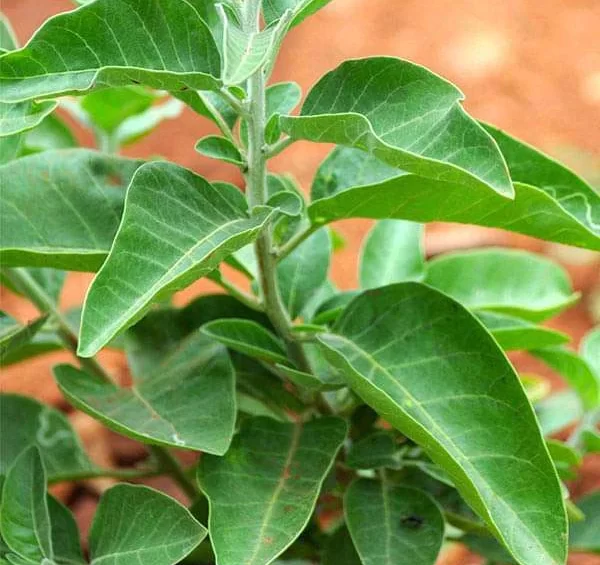Having a good night’s sleep is of utmost importance nowadays with sleep issues becoming common with more and more people. Many complain about sleepless nights and disturbed sleep that causes fatigue and low energy levels throughout the daytime.
Here are the top tips that can help you sleep better at night naturally. Going for natural methods is the best mode of action because of the harmful side effects offered by chemical-based sleeping pills. These life hacks can help you get your 8 hours of sound sleep. Stop using blue light coming from the screen of smartphones and TV screens
The blue light coming from TV and smartphone screens has been shown to interfere with sleep. Binge-watching late in the night can make your brain alert and it gets hard to fall asleep.Stop consuming caffeine after 3 PM
Caffeine consumption throughout the day and especially later in the evening can cause you to stay awake at night. It is a known fact that the consumption of caffeine canenhance focus, energy, and overall performance.
It can stay effective in your bloodstream for 6-8 hours. So, the intake of caffeinated beverages should be stopped around 3 PM. Reduce long daytime naps
It has been shown by multiple sleep studies that shorter naps are more effective for your brain functioning as compared to longer and irregular naps.
Taking random longer naps in the daytime can step in the way of a good night’s sleep. It s recommended to take shorter naps if you are tired during the dayLimit your alcohol consumption
Alcohol consumption can be bad for your sleep quality and routine as multiple studies suggest multiple herbal supplements in the market can its a negative impact. Many studies have shown that alcohol can increase the symptoms of sleep apnea, snoring and disrupted sleep patterns.
Alcohol consumption also alters the body’s circadian rhythm and interferes in sleep by altering melatonin production.Try to create a cozy bedroom environment
Maintaining an optimum temperature, noise, external lights, and furniture arrangement,
Make sure your bedroom is a quiet, relaxing, clean, and enjoyable place.Go for early dinners
It will be beneficial for you if you follow a habit of eating early dinners. Eating late in the night can reduce sleep quality and can hamper the release of HGH and Melatonin.
Studies have shown that eating dinner 4-5b hours before bedtime can help induce sleep faster. Do relaxing activities in the evening time to calm yourself down. One such example is listening to classical music during the day
Intentionally planning some relaxing activities in the evening time can relax and calm you down. For example, listening to calming music, reading a book etc. Such activities can calm you down and create a relaxed space for you to fall asleep faster. Taking relaxing shower with warm water
It has been shown through studies that taking a bath before bedtime can help you fall asleep faster.
You can also wash your feet with warm water before going to sleep if you don’t want to bathe.Avoid drinking too much liquid before bedtime
Taking fluids throughout the day is recommended to maintain optimum levels of hydration in the body. But, drinking too much water in the evening can cause frequent urination in the nighttime.
This can come in the way of you getting sound sleep. So, it is recommended to reduce to intake of water and other fluids 2-3 hours before sleep time. In addition to this, make sure that you empty your bladder before going to bed. This will reduce the unwanted trouble of getting up in the night frequently and you can sleep undisturbed for 8 hours at a stretch. Make sure your bed mattress, pillow and bed is comfortable
If you have an uncomfortable mattress that is causing strain on your back and a pillow that gives you neck pain then it’s high time to change them.
Long term use ofIt’s recommended that you upgrade your bedding at least every 5–8 yearsTry to get exercise or schedule your workout in the daytime
It is a well-known fact that exercise or any kind of physical activity is necessary for your well being. Also, daily exercise can reduce the time taken to fall asleep thereby improving sleep for people with Insomnia.
Exercising through the daytime is highly effective and it is recommended that exercising late in the evening can cause more alertness due to the spike in hormones such asepinephrine and adrenaline. This can further delay the onset of a good night’s sleep. Reduce or Quit smoking
Everyone is aware of the hazardous effects of smoking. But, did you know that cutting on your cigarettes can improve your sleep? The reason is “Nicotine”.
Nicotine being a stimulant candisrupt sleep as well as raise the risk of developing sleep conditions, such as sleep apnea. It is also great at masking exhaustion gives you an alert mind immediately.
Even if you wish to quit smoking, the withdrawal of Nicotine can cause irritability and lack of sound sleep. These withdrawal symptoms subside over time, so it is always advised to quit smoking and be patient with yourself while quitting it.Get hold of good herbal supplements
Multiple herbal supplements in the market can help improve your sleep quality. These offer the benefit of being natural and free from any harmful chemicals. Practice meditation or relaxing exercises
Meditation has numerous benefits in calming a stressed mind and enhancing mental clarity. When meditation is practiced before bedtime, it helps manage stress and allows you to sleep better. Make a sleep schedule and follow it daily
Following a daily routine with specific timings allotted to various activities is the key to a healthy lifestyle. It is suggested that you should sleep and wake up daily at the same time.
Studies have shown that irregular sleeping patterns can hamper your circadian rhythm and melatonin production. This will benefit in the long term by allowing the body to feel sleepy and wake up at the same time daily.
- Monitor your sleep position
The sleeping position also plays a key as side sleepers can experience more pressure on one side of the body. Back and stomach sleepers need a firmer mattress to keep their spine aligned. If you notice that your sleeping position has been an impeding factor that causes discomfort and body aches, then it’s time to make the necessary changes.Keep your sleeping place strictly for yourself
Sleeping with your pet or sharing your sleeping space with kids can interrupt your sleep. So, it is suggested that you keep separate sleeping spaces for kids and pets to ensure undisturbed sleep at night. Avoid taking chemical-based sleeping pills
Any chemical-based formulations have some side effects. Sleeping pills can interfere with normal breathing and can be dangerous in people who have certain chronic conditions such as Asthma etc. In addition to causing numerous side effects, it is addictive and often leads to sleepless nights when stopped.
Some of the common side effects arechanges in appetite, Constipation, Diarrhoea,Balance problems, Dizziness,Daytime drowsiness, Dry mouth or throat, Headache,Heartburn, Weakness etc.
Sleeping Pills also causes drowsiness in the morning making it difficult to start your day with an alert mind. Manage stress levels
Managing stress levels on a day to day basis is the key. High levels of chronic stress can negatively impact your physical as well as emotional health.
Chronic stress in your life needs to be addressed and managed constantly to lead a healthy and balanced life.
For this, you need to address the sources causing you stress and prioritize your activities to eliminate unnecessary stress.

A simple thing that you can do is to make a stress journal and answer the following questions:
- What caused you to stress?
- How do you feel both physically and emotionally?
- What was your response/reaction to it?
- What did you do to make yourself feel better?
Simple lifestyle changes such as time management, making time for fun and relaxing activities, spending time with pets and loved ones etc can help reduce and manage stress.
When your stress is managed well, you will feel happier, healthier and more productive. This will help you sleep better at night too. Acknowledge physical pain areas that need to be addressed immediately
If you are experiencing physical pain, then it is necessary to address it with medical intervention. There could be some underlying reasons for the physical pain that need attention as it could interfere with a good night’s sleep.
Here are the top herbs that help you sleep better at night
Indian Valerian/ Tagar
Tagar is a root found mainly in the Himalayan region. Its benefits were mentioned in the Charak Samhita. The Valerian root offers a sedative and tranquillizing effect on the mind and body. The sedative properties are helpful in inducing sound sleep, treatment of Insomnia and calming the mind.
Ashwagandha
Best known for its apoptogenic properties. It helps the body manage stress by calming the body and mind.
Many studies have been done on Ashwagandha that proves itssleep-inducing properties, improvement in sleep quality and reduction of sleep latency in patients with Insomnia.
Indian tinospora/ Gudduchi
Studies have proved the positive effects of Guddchi on memory and the nervous system. It reduces prolonged sleep deprivation along with other multiple health benefits.
Shankhpushpi
It is rich in flavonoids, glycosides and alkaloids that help soothe your nervous system by reducing mental fatigue. It acts as a natural tranquillizer for anxiety neurosis that further helps in improving sleep.
Brahmi
Also known as Brain Tonic in Ayurveda, Brahmi has powerful properties that calm emotional turbulence and also help improve concentration and alertness. It is also known for promoting restful sleep.
Sarpagandha
This natural ingredient has strong sedative properties that calm an agitated mind and support the nervous system. It has shown positive results for people with Insomnia as it relaxes the mind and promotes deep sleep. Results have also shown that it reduces mental stress, tension, anxiety and nervousness.












